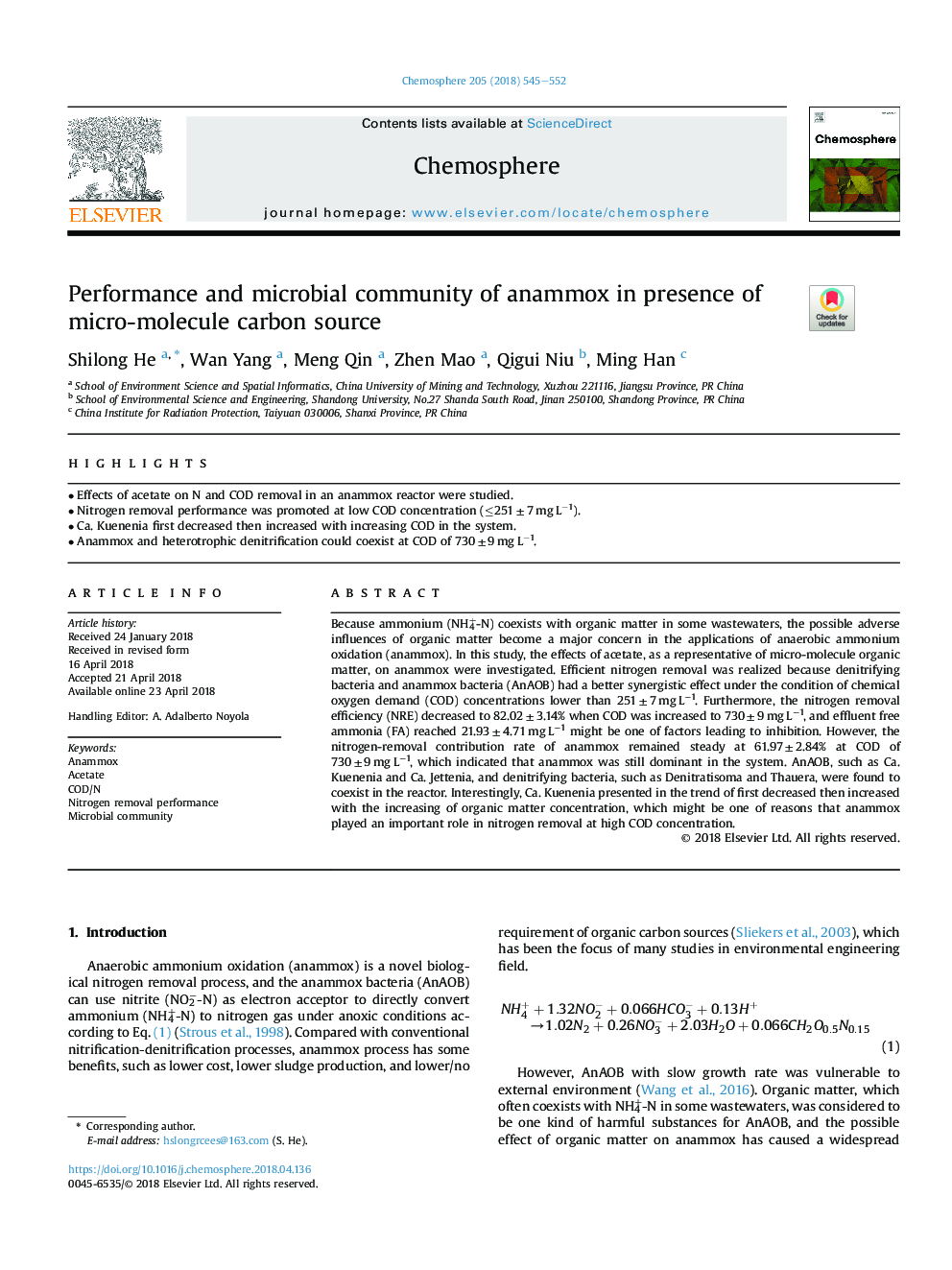| Article ID | Journal | Published Year | Pages | File Type |
|---|---|---|---|---|
| 8851156 | Chemosphere | 2018 | 8 Pages |
Abstract
Because ammonium (NH4+-N) coexists with organic matter in some wastewaters, the possible adverse influences of organic matter become a major concern in the applications of anaerobic ammonium oxidation (anammox). In this study, the effects of acetate, as a representative of micro-molecule organic matter, on anammox were investigated. Efficient nitrogen removal was realized because denitrifying bacteria and anammox bacteria (AnAOB) had a better synergistic effect under the condition of chemical oxygen demand (COD) concentrations lower than 251â¯Â±â¯7â¯mgâ¯Lâ1. Furthermore, the nitrogen removal efficiency (NRE) decreased to 82.02â¯Â±â¯3.14% when COD was increased to 730â¯Â±â¯9â¯mgâ¯Lâ1, and effluent free ammonia (FA) reached 21.93â¯Â±â¯4.71â¯mgâ¯Lâ1 might be one of factors leading to inhibition. However, the nitrogen-removal contribution rate of anammox remained steady at 61.97â¯Â±â¯2.84% at COD of 730â¯Â±â¯9â¯mgâ¯Lâ1, which indicated that anammox was still dominant in the system. AnAOB, such as Ca. Kuenenia and Ca. Jettenia, and denitrifying bacteria, such as Denitratisoma and Thauera, were found to coexist in the reactor. Interestingly, Ca. Kuenenia presented in the trend of first decreased then increased with the increasing of organic matter concentration, which might be one of reasons that anammox played an important role in nitrogen removal at high COD concentration.
Related Topics
Life Sciences
Environmental Science
Environmental Chemistry
Authors
Shilong He, Wan Yang, Meng Qin, Zhen Mao, Qigui Niu, Ming Han,
